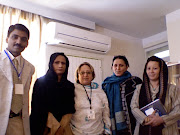A broader perspective shows many incidents of Ethiopian-Somali conflict. Boundary disputes over the Ogaden region date to the 1948 settlement when the land was granted to Ethiopia. Somali disgruntlement with this decision has led to repeated attempts to invade Ethiopia with the hopes of taking control of the Ogaden to create a Greater Somalia. This plan would have reunited the Somali people of the Ethiopian-controlled Ogaden with those living in the Republic of Somalia. Without that, ethnic and political tensions have caused cross-border clashes over the years.
1960–1964 Border Dispute
1977–1978 Ogaden War
1982 August Border Clash
1998–2000 Cross-border warfare during the chaotic warlord-led era.
Conflicts between Ethiopia and Somalia are not limited to the 20th–21st Centuries. Wars between Somalia, or its precursor Islamic states, and Ethiopia, stretch back to 16th century. For example, Ahmad ibn Ibrihim al-Ghazi was a 16th Century Islamic leader popular in Somali culture for his jihad against the Ethiopians during the rise of the Adal Sultanate.
Therefore, painful living history, oral and cultural traditions, long-standing ethnic divisions and sectarian differences lay between the two nations and fuel the conflict.
The War in Somalia is an ongoing armed conflict involving largely Ethiopian and Somali Transitional Federal Government (TFG) forces versus the Islamist militant umbrella group, the Islamic Court Union (ICU), and other affiliated militias for control of the country. The war officially began on December 21, 2006, when the leader of the ICU, Sheik Hassan Dahir Aweys, declared "Somalia is in a state of war, and all Somalis should take part in this struggle against Ethiopia". On December 24, Ethiopia stated it would actively combat the ICU.
Ethiopia's prime minister, Meles Zenawi, said Ethiopia entered hostilities because it faced a direct threat to its own borders. “Ethiopian defense forces were forced to enter into war to protect the sovereignty of the nation,” he said. “We are not trying to set up a government for Somalia, nor do we have an intention to meddle in Somalia's internal affairs. We have only been forced by the circumstances.”
While it is true the ICU made threats to carry the war into Ethiopia, the circumstances referred to were in part due to prior Ethiopian actions. Ethiopia's involvement in Somalia had begun months before, with the intercession of forces to support the establishment of the transitional government, and to support other regional governments considered more acceptable to Ethiopia.
The ICU, which controlled the coastal areas of southern Somalia, engaged in fighting with the forces of the Somali TFG, and the autonomous regional governments of Puntland and Galmudug, all of whom were backed by Ethiopian troops. The outbreak of heavy fighting began on December 20 with the Battle of Baidoa, after the lapse of a one-week deadline the ICU imposed on Ethiopia (on December 12) to withdraw from the nation. Ethiopia, however, refused to abandon its positions around the TFG interim capital at Baidoa. On December 29, after several successful battles, TFG and Ethiopian troops entered Mogadishu relatively unopposed. Although not announced until later, a small number of U.S. special forces troops accompanied Ethiopian and TFG troops after the collapse and withdrawal of the ICU to give military advice and to track suspected al-Qaida fighters.
The two sides had traded war declarations and gun fire on several occasions before. Eastern African countries and international observers fear the Ethiopian offensive may lead to a regional war, involving Eritrea, a long-time enemy of Ethiopia, who Ethiopia claims to be a supporter of the ICU.
1960–1964 Border Dispute
1977–1978 Ogaden War
1982 August Border Clash
1998–2000 Cross-border warfare during the chaotic warlord-led era.
Conflicts between Ethiopia and Somalia are not limited to the 20th–21st Centuries. Wars between Somalia, or its precursor Islamic states, and Ethiopia, stretch back to 16th century. For example, Ahmad ibn Ibrihim al-Ghazi was a 16th Century Islamic leader popular in Somali culture for his jihad against the Ethiopians during the rise of the Adal Sultanate.
Therefore, painful living history, oral and cultural traditions, long-standing ethnic divisions and sectarian differences lay between the two nations and fuel the conflict.
The War in Somalia is an ongoing armed conflict involving largely Ethiopian and Somali Transitional Federal Government (TFG) forces versus the Islamist militant umbrella group, the Islamic Court Union (ICU), and other affiliated militias for control of the country. The war officially began on December 21, 2006, when the leader of the ICU, Sheik Hassan Dahir Aweys, declared "Somalia is in a state of war, and all Somalis should take part in this struggle against Ethiopia". On December 24, Ethiopia stated it would actively combat the ICU.
Ethiopia's prime minister, Meles Zenawi, said Ethiopia entered hostilities because it faced a direct threat to its own borders. “Ethiopian defense forces were forced to enter into war to protect the sovereignty of the nation,” he said. “We are not trying to set up a government for Somalia, nor do we have an intention to meddle in Somalia's internal affairs. We have only been forced by the circumstances.”
While it is true the ICU made threats to carry the war into Ethiopia, the circumstances referred to were in part due to prior Ethiopian actions. Ethiopia's involvement in Somalia had begun months before, with the intercession of forces to support the establishment of the transitional government, and to support other regional governments considered more acceptable to Ethiopia.
The ICU, which controlled the coastal areas of southern Somalia, engaged in fighting with the forces of the Somali TFG, and the autonomous regional governments of Puntland and Galmudug, all of whom were backed by Ethiopian troops. The outbreak of heavy fighting began on December 20 with the Battle of Baidoa, after the lapse of a one-week deadline the ICU imposed on Ethiopia (on December 12) to withdraw from the nation. Ethiopia, however, refused to abandon its positions around the TFG interim capital at Baidoa. On December 29, after several successful battles, TFG and Ethiopian troops entered Mogadishu relatively unopposed. Although not announced until later, a small number of U.S. special forces troops accompanied Ethiopian and TFG troops after the collapse and withdrawal of the ICU to give military advice and to track suspected al-Qaida fighters.
The two sides had traded war declarations and gun fire on several occasions before. Eastern African countries and international observers fear the Ethiopian offensive may lead to a regional war, involving Eritrea, a long-time enemy of Ethiopia, who Ethiopia claims to be a supporter of the ICU.












No comments:
Post a Comment